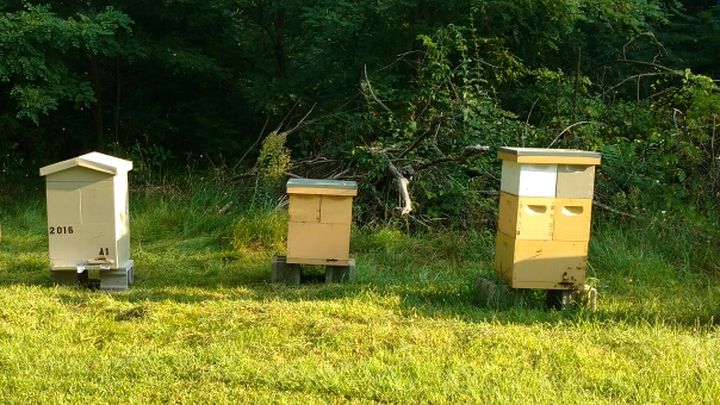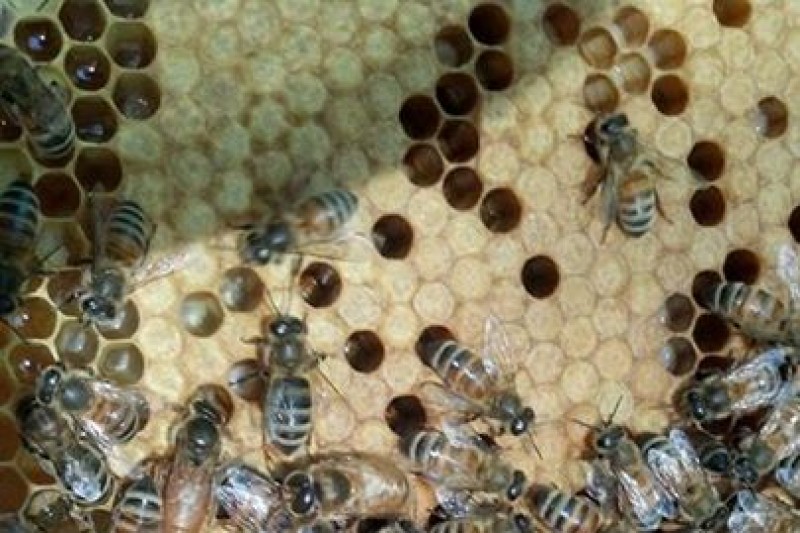
Sustainable Beehives For Michigan

Welcome to my campaign to build better beehives for Michigan!
First, let me introduce myself. My name is Lisa, I'm a mom with two totally awesome young children, a beekeeper, and a pastry chef!
I got interested in beekeeping several years ago when colony collapse disorder was first being recognized. My interest became concrete when I discovered a tree in the yard had a wild colony in it, and I would watch the bees work all summer. They swarmed the next spring, and it was my first time seeing, and HEARING a prime swarm! It was so amazing! I knew I had to be a beekeeper at that moment and I've never looked back.
And I want to share beekeeping with anyone interested. Whether it's because you keep a garden, or a farm, or you love real fresh local honey, beekeeping is a worthy consideration.
Now I've seen a lot of, "save the bees" slogans applied to many things, even ice cream advertisement. While I would hate to be cliché in claiming my campaign is saving the bees as well, I work diligently to preserve my own beehives, which led me to some alternatives in hive management. Essentially, I've been working on dissecting the way we"keep" the bees. Specifically what we keep bees in. The hives themselves.
A long time ago beekeepers all over the world were competing for a better way to produce honey. In 1852 the Langstroth standard hive was patented. It is still the most commonly available commercial hive design here in the United States. It's cheap, easy to use and every beekeeping equipment store sells it. However, while the hive is affordable when producing honey, we can't put bees in it to live sustainably. We have to provide wind barriers, insulation, bails of straw, roofing felt. ...all sorts of gimmicks to protect the hives from our harsh winters.
Our beehives are essentially seasonal cottages. Too hot one season and deadly cold another. 
(This picture is of standard hives, "bearding" in the heat. A well populated hive will send workers outside to sit on the porch if it's too hot, otherwise they literally cook their own young. It's awful!)
We hear numbers in Michigan like 70% LOSSES of wintering colonies. That's been as high as 90-100% in hard years. So we buy more bees from other states to dump in our summer cottages, hoping for better survival. We are thrilled when we only lose 50% of our hives because it was a mild winter with an early spring.
Last year I had the opportunity to ask a professional carpenter to look at my hives objectively and literally rip one apart. His very first response was a question. "Why do you use this design? "
I was actually confused. I used it because that is the standard of the industry. It is the hive most available, and most widely used by other beekeepers. Why wouldn't I use it? The answer may surprise you. He simply said, "because it doesn't work for what you are trying so hard to do. "
This started a whole quest to build a better hive. With the help and talent of the Carpenter a prototype was created. It is the combined elements of many hives being used, selecting features best suited for our climate here in Michigan.
We are now in the second season of testing with 7 hives built to actually KEEP bees in, and I have been awestruck by the differences in side by side comparisons to the standard hives.
The colonies build faster, maintain larger winter brood clusters, use less honey, and are more readily able to take advantage of early pollen and nectar flows. In the summer, few bees ever "porch sit" and expend energy trying to cool an overheated hive, which increases productivity.
The new hive features better insulation, vastly improved ventilation, built in varroa mite control, and greater hive size. Just to name a few. It also features a division option for ease of swarm control and better spring management. There's no wrapping each hive in fall, or trying to move them to try and protect them from the cold. The hive is designed to be a one time installation.
It's built to house a colony all year without any complicated extra additions.
Over the next winter months starting in November, I would like to build up to 125 of these hives. I have invested a lot of my own funds in the project, but I need help.
The materials alone for each of the hives is around $130.00.
The funds raised here will be used to purchase some of the materials and help in the overall costs of producing the 125 new hives.
The end goal is to then test the survival rates of a broad group of bee colonies.
If the hive is as successful as initial testing suggests, we could help boost the wintering bee populations in Michigan by up to 25% of each beekeeper utilizing the design. Many people would benefit including beekeepers, hobbyists, small farmers, small honey businesses, research groups and botanical gardens.
Your donations are helping to reshape the hives we use as beekeepers.
Thank you for taking the time to read my campaign, I appreciate any support you can provide.
Donations don't have to be big to have a great significance. $5.00 from each person who sees this page can make the goal a reality!
In addition, for every $100.00 reached over the campaign fund goal, I will donate 10 pounds of raw spring honey to my local food bank.
Thank you for your support and interest in making beekeeping more sustainable for everyone, but especially the bees!


